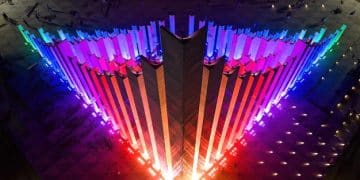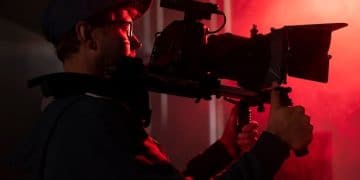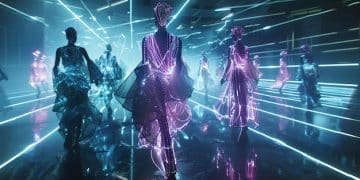The Evolution of Stage Designs: A 5-Year Visual Concert Analysis
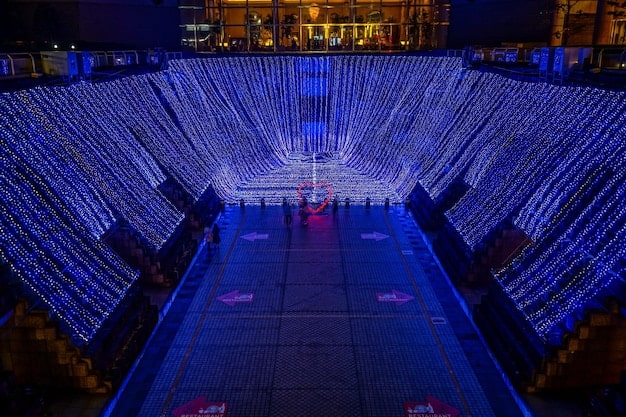
Over the past five years, stage designs in concert coverage have dramatically evolved, integrating advanced visual technologies and interactive elements to create immersive and unforgettable audience experiences, moving beyond traditional lighting and set pieces.
The realm of live music has always been a spectacle, yet the last half-decade has witnessed an unprecedented transformation in how artists present their performances. Delving into How Did Stage Designs Evolve in the Last 5 Years? A Visual Concert Coverage Analysis reveals a fascinating trajectory of innovation, pushing the boundaries of what’s possible in live entertainment. From towering LED screens to intricate kinetic sculptures and interactive projections, artists and creative teams are redefining the concert experience, making it an increasingly visual and immersive journey for every attendee. This evolution isn’t merely about aesthetics; it profoundly impacts how audiences connect with music and creates a lasting impression that extends far beyond the final note.
The rise of LED technology and immersive screens
In the past five years, the prominence of LED technology on concert stages has exploded, becoming arguably the most significant driver of visual evolution. Gone are the days of simple backdrop projections; modern stages now boast massive, high-resolution LED walls that wrap around performers, extend into the audience, and even create dynamic floors. This shift has enabled an unprecedented level of visual storytelling, transforming static sets into fluid, ever-changing landscapes that react in real-time to the music and performer movements.
The versatility of LED screens allows for instant scene changes, transitions between hyperrealistic environments and abstract art, all without the need for physical set changes. This not only enhances the visual spectacle but also streamlines production logistics, making complex creative visions more achievable. Artists can now transport their audiences to fantastical worlds, simulate extreme weather conditions, or display intricate graphics that complement lyrical themes, adding layers of depth and meaning to their performances.
Beyond static displays: Interactive and transparent LEDs
The evolution didn’t stop at bigger, brighter screens. Innovation pushed into interactive and transparent LED applications. Transparent LED panels, for instance, allow for performers to appear behind a seemingly solid screen, creating ethereal, layered visual effects. This technology blurs the line between physical presence and virtual imagery, opening up new artistic possibilities.
- Layered Visuals: Transparent screens enable depth perception, allowing for elements to appear in front of and behind performers simultaneously.
- Performer Integration: Artists can interact with projected graphics as if they are tangible objects, fostering a deeper connection with the visual narrative.
- Dynamic Transformations: What appears to be a solid structure can suddenly become translucent, revealing new elements or performers.
Interactive LEDs, on the other hand, react to sound, motion, or even audience input, forging a more participatory experience. Imagine a stage where patterns swirl and change in response to a crowd’s cheers or an artist’s dance moves. This level of responsiveness creates a truly unique and ephemeral experience that can never be replicated exactly, making each concert unique.
The integration of advanced media servers and content creation pipelines has been crucial for this development. Teams of visual artists and technicians work tirelessly to develop custom content that is meticulously synchronized with every beat, every lyric, and every stage movement. This seamless integration ensures that the visual elements are not merely decorative but integral to the overall artistic statement, enhancing the emotional impact of the music.
This dynamic interplay between light, screen, and performance has become a benchmark for contemporary concert production. It reflects a growing understanding that modern audiences expect more than just sound; they demand a multisensory journey that captures their imagination and leaves them breathless, providing compelling content for concert coverage analysis time and again.
Architectural scale and kinetic elements
Beyond digital screens, stage designs have increasingly embraced architectural scale and intricate kinetic elements. The stage is no longer just a platform; it’s a dynamic, three-dimensional sculpture that can reconfigure itself throughout a show. This trend emphasizes physical grandeur and mechanical ingenuity, transforming the concert space into a living, breathing entity.
Kinetic stage elements, ranging from automated risers and moving platforms to suspended structures that shift and rotate, add a palpable sense of drama and surprise. These components allow for dramatic reveals, dynamic transitions, and the creation of continually evolving performance spaces. For instance, a stage might start as a minimalist platform and gradually transform into a multi-tiered fortress or an ethereal floating island, all within the span of a single song.
Pushing physical boundaries: Automated and modular designs
Modern stage designs frequently utilize automated systems, precisely choreographed to music and lighting cues. These systems can manipulate large-scale elements with astonishing precision, creating flowing movements that enhance the emotional arc of a performance. This goes beyond simple automation; it’s about making stage elements integral characters in the visual narrative.
- Automated scenery: Walls, floors, and props move on tracks or lifts, allowing for rapid and complex scene changes.
- Suspended apparatus: Performers can be lifted, rotated, or transported across the stage on custom-designed rigs.
- Modular components: Stages are assembled from interchangeable units that can be combined and reconfigured to create diverse layouts.
The use of modular and reconfigurable stage components also allows for greater artistic flexibility. Designers can craft multiple distinct looks and environments from a single set of standardized pieces, making tours more adaptable to different venues and artistic demands. This adaptability is particularly crucial for large-scale productions that visit numerous cities, where logistical efficiency must meet creative ambition.
Furthermore, designers are increasingly collaborating with structural engineers and robotics experts to realize their visions. This cross-disciplinary approach leads to innovative solutions that integrate cutting-edge materials and technologies, ensuring both safety and spectacle. The result is a stage that is not only visually stunning but also structurally sound and capable of performing complex, synchronized movements without a hitch. This architectural ambition, paired with kinetic artistry, elevates the concert experience into a truly immersive, theatrical event, providing rich material for a visual concert coverage analysis.
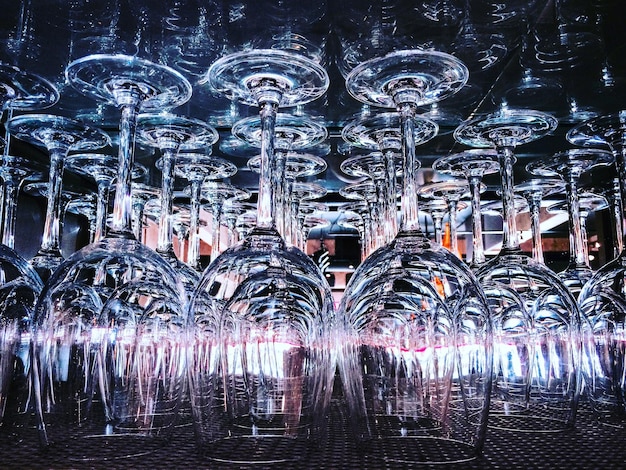
The integration of augmented reality and projection mapping
The boundary between the physical and digital world on stage has become increasingly blurred with the sophisticated integration of augmented reality (AR) and projection mapping. These technologies allow designers to overlay digital content onto physical structures, creating illusions of depth, movement, and interaction that are nothing short of magical. This trend has seen remarkable growth in the last five years, offering unique visual possibilities.
Projection mapping, in particular, has evolved from a niche technique into a mainstream concert tool. Artists now utilize powerful projectors to cast intricate, animated graphics onto three-dimensional objects, whether they are custom-built stage elements, instruments, or even the performers themselves. This transforms static objects into canvases for dynamic visual effects, making them appear to melt, reshape, or come alive with light and color.
Expanding realities through digital overlays
Augmented reality, while still somewhat nascent in large-scale live concert settings due to its reliance on individual device viewing, is making significant strides. When integrated, AR can allow audience members watching through their phones or specific screens to see digital elements appear overlaid onto the physical stage, creating a personalized and interactive visual experience. Imagine a dragon flying across the stage, visible only through your phone’s camera, or a virtual costume change for the artist.
- Dimensional Illusions: Projection mapping creates the illusion of depth, texture, and movement on flat or irregularly shaped surfaces.
- Interactive Environments: AR enables virtual elements to interact with the real world on screen, fostering a personalized visual experience.
- Contextual Storytelling: Both technologies allow for narratives to unfold directly on physical objects, adding layers of meaning.
Concert visuals are no longer confined to screens. With these technologies, the entire venue can become part of the experience. Exterior walls, ceilings, and even the audience itself can be turned into projection surfaces, creating a truly all-encompassing visual environment. This immerses the audience not just in the stage performance but within an entire visual landscape, turning the concert into a living work of art.
The sophistication of projection mapping now includes real-time content generation and reactive elements, meaning visuals can instantaneously adapt to changes in music, tempo, or crowd energy. This level of dynamic interaction ensures that the visuals are never repetitive and always feel fresh, complementing the spontaneity inherent in live performance. The careful calibration and technical expertise required to pull off these effects are immense, often demanding weeks of intricate planning and system setup. Nevertheless, the stunning results make AR and projection mapping indispensable tools in the modern stage design arsenal, continually pushing the boundaries of a visual concert coverage analysis.
Sustainability and eco-conscious stage design
As discussions around global climate change intensify, the concert industry has begun to critically examine its environmental footprint. Over the last five years, there has been a noticeable, albeit gradual, shift towards more sustainable and eco-conscious stage designs. This reflects a broader industry movement to reduce waste, conserve energy, and promote responsible consumption, influencing every aspect from materials to power sources.
Designers are increasingly prioritizing the use of reusable, recyclable, and locally sourced materials for stage construction. This involves moving away from single-use plastics and non-biodegradable foams towards more durable and environmentally friendly alternatives. The focus is not just on the materials themselves but on the entire lifecycle of a stage component, from manufacturing to its eventual disposal or repurposing.
Minimizing environmental impact through innovation
Energy efficiency is another critical aspect of sustainable stage design. With the advent of brighter, more efficient LED lighting and projection systems, the overall power consumption of concerts can be significantly reduced compared to older incandescent technologies. Venues and production companies are also exploring renewable energy sources to power their shows, further decreasing their carbon footprint.
- Material Innovation: Utilizing bamboo, recycled plastics, and reclaimed wood for set construction.
- Energy Efficiency: Employing LED lighting, solar power, and smart energy management systems.
- Waste Reduction: Designing modular sets for reusability and minimizing single-use props.
Beyond materials and energy, logistical considerations such as transportation and packaging are also being re-evaluated. Designs that are modular and easily collapsible can reduce the number of trucks needed for transport, thereby cutting down on fuel consumption and emissions. This holistic approach to sustainability aims to minimize environmental impact at every stage of production.
Artists themselves often champion these eco-friendly initiatives, using their platforms to raise awareness and demand greener touring practices. This artist-driven push, combined with a growing consumer demand for environmentally responsible events, is accelerating the adoption of sustainable design principles across the industry. While challenges remain in balancing creative ambition with ecological responsibility, the progress over the last five years demonstrates a clear commitment to a more sustainable future for live music. This focus on green practices adds another layer of complexity to a comprehensive visual concert coverage analysis, highlighting responsible innovation.
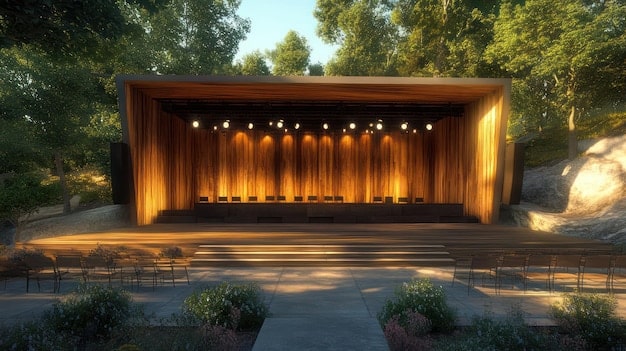
Audience interaction and personalized experiences
The modern concert is no longer a passive viewing experience. In the last five years, stage designs have increasingly incorporated elements that encourage and facilitate audience interaction, moving towards personalized and participatory events. This shift recognizes the audience not just as spectators, but as integral components of the live show, blurring the lines between performer and fan.
A key aspect of this trend is the use of wearable technology and mobile apps that allow audience members to influence the show’s visuals or lighting from their seats. Imagine synchronized wristbands that light up in patterns controlled by the stage, or an app that lets you vote on the next visual theme. Such technologies transform the crowd into an active participant, fostering a unique sense of community and shared creation.
Bridging the gap between stage and crowd
Beyond digital interaction, physical stage layouts are also adapting to encourage closer engagement. Smaller, B-stages, catwalks extending into the audience, and circular configurations allow performers to be closer to fans in multiple sections of a venue. This physically breaks down traditional barriers, making the experience more intimate and less remote.
- Wearable Tech: Light-up wristbands and other devices synchronized with the show.
- Mobile Applications: Apps for voting, sending messages, or creating personalized content for display.
- Physical Proximity: Stage extensions and alternative configurations to bring artists closer to fans.
Another powerful tool for interaction is the integration of audience reactions into real-time visuals. Cameras capturing crowd energy can feed into generative art systems, creating visuals that directly reflect the atmosphere of the venue. This feedback loop ensures that no two shows are exactly alike, as the unique energy of each audience directly shapes a part of the visual experience.
The goal of these interactive elements is to create a more memorable and personal experience for each attendee. In an age where digital content is abundant, live events must offer something truly unique and engaging. By making the audience part of the show, designers are not just enhancing visuals; they are building a stronger emotional connection between the artist, the music, and the community of fans. This evolving dynamic is a crucial aspect of any modern visual concert coverage analysis, as it speaks to the transformative nature of live performance in the digital age.
The blurring lines between music and performance art
The evolution of stage design over the past five years has fundamentally transformed concerts from mere musical performances into grand spectacles that often verge on immersive performance art. This trend reflects a broader artistic movement where visual storytelling, theatricality, and technology coalesce to create a multi-sensory experience where music is just one, albeit central, component. The stage is now a canvas for a holistic artistic vision.
Artists are increasingly functioning not just as musicians but also as creative directors, collaborating with architects, visual artists, choreographers, and engineers to craft environments that are as much gallery installations as they are concert venues. This interdisciplinary approach allows for elaborate narratives to unfold, with plot lines, character development, and visual metaphors woven throughout the setlist.
Concerts as curated experiences
This fusion means that stage designs are no longer simply backdrops but are active participants in the performance. They can represent emotional landscapes, abstract concepts, or literal environments that transport the audience into the artist’s world. The lighting, projections, and kinetic elements are meticulously choreographed to evolve with the emotional arc of each song, amplifying its impact.
- Narrative Arc: The stage design and visuals tell a story that evolves throughout the concert.
- Interdisciplinary Collaboration: Artists work with a diverse team of creatives, from architects to choreographers.
- Sensory Immersion: Every element from sound to light to movement contributes to a unified artistic statement.
The influence of theatrical productions and art installations is evident in the scale and ambition of contemporary concert stages. Complex rigging, automated props, and sophisticated special effects are employed to create breathtaking moments of wonder and surprise. These elements are designed to evoke strong emotional responses, making the concert an unforgettable journey rather than just a collection of songs. This approach creates a rich tapestry of experiences that are ripe for exploration in a detailed visual concert coverage analysis.
Furthermore, the visual identity of a tour often becomes as iconic as the music itself. The stage design can define an era for an artist, becoming instantly recognizable and deeply intertwined with their artistic brand. This elevates the concert experience beyond pure entertainment, positioning it as a significant cultural event where art, technology, and human emotion converge in extraordinary ways, constantly pushing creative boundaries.
| Key Evolution | Brief Description |
|---|---|
| 💡 LED Dominance | Massive, high-resolution LED screens for dynamic visual storytelling. |
| ⚙️ Kinetic Structures | Moving platforms, automated risers, and shifting elements for fluid stage transformations. |
| 🌌 AR & Projection Mapping | Digital content overlaid on physical objects, creating illusions and interactive environments. |
| 🤝 Audience Engagement | Integration of wearable tech, apps, and stage extensions for participatory experiences. |
Frequently Asked Questions About Stage Design Evolution
The most significant advancements include the widespread adoption of high-resolution LED screens, sophisticated projection mapping, and the integration of kinetic stage elements. These technologies allow for dynamic, immersive visuals that transform the concert experience beyond static backdrops. They create ever-changing environments and interactive displays.
LED technology has revolutionized stage design by providing virtually limitless possibilities for visual content. Massive LED walls create dynamic backgrounds, transparent screens offer layered effects, and interactive LEDs react to performance elements. This allows for rapid scene changes and a more integrated visual narrative, making stages highly adaptable and visually spectacular.
Yes, there’s a growing trend towards sustainability in stage design, though it’s an ongoing process. Designers are increasingly using reusable and recyclable materials, employing energy-efficient LED lighting, and optimizing logistics to reduce fuel consumption. This shift is driven by both environmental concerns and artist advocacy, promoting greener touring practices.
Modern stage designs engage audiences through technologies like wearable wristbands that sync with lights, mobile apps for voting or content submission, and physical stage extensions such as catwalks. These elements turn spectators into active participants, fostering a more personalized and communal concert experience that blurs the lines between performer and fan.
Contemporary stage designs increasingly transform concerts into immersive performance art. Visuals often tell elaborate stories, and stages feature theatrical elements, choreography, and advanced technology. The music integrates deeply with a broader artistic vision, making the stage an active participant in a curated, multi-sensory spectacle that transcends a simple musical show.
Conclusion on Stage Design Evolution
The past five years represent a pivotal period in the evolution of stage design, transforming concerts into truly immersive, multi-sensensory experiences. We’ve witnessed a dramatic shift from conventional backdrops to dynamic, interactive environments dominated by colossal LED screens, intricate kinetic sculptures, and sophisticated projection mapping techniques. Artists, collaborating with a diverse array of technical and creative minds, are now leveraging augmented reality and personalized audience engagement tools to forge deeper connections with their fans. This progression highlights a growing emphasis on sustainability and an increasing blur between live music and performance art, creating spectacles that are visually stunning, emotionally resonant, and architecturally ambitious. As technology continues its relentless march forward, the future of concert stage design promises even more breathtaking innovations, continually redefining what a live performance can be and offering endless rich content for future visual concert coverage analysis.
